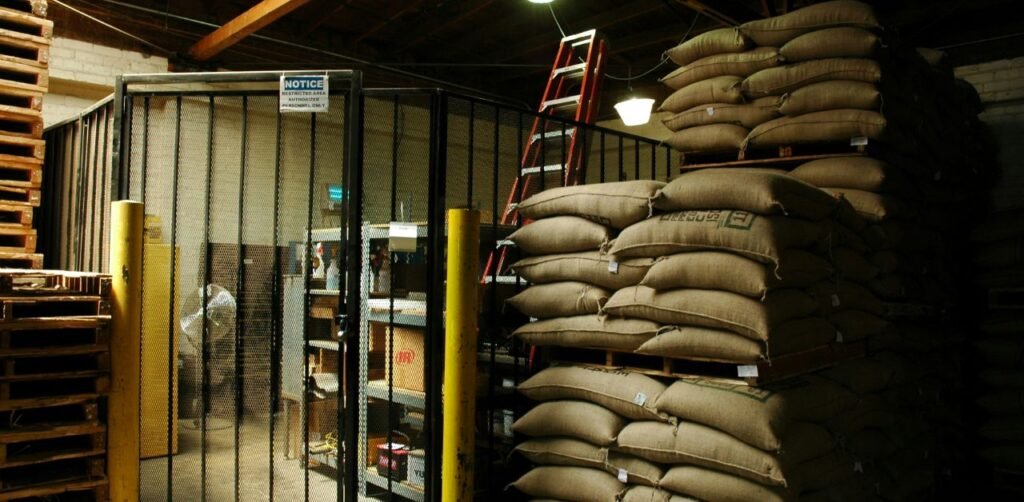The letters FIFO refer to a critical system for food safety and storage in the food industry.
FIFO, which stands for First In, First Out, ensures that older food items are used before newer ones, helping to reduce waste and maintain high standards of freshness and safety.
This guide will explain the importance of FIFO, how to implement it, and the benefits it brings to your establishment.
Whether you’re a business owner or a food handler, understanding and utilizing FIFO can transform your food storage practices.
What does FIFO refer to ?
FIFO stands for First In, First Out. It’s a system for storing and rotating food where the oldest items are used first.
This method ensures that food items are used in the order they were received, reducing the chances of food going bad and minimizing waste.
FIFO helps keep your food storage organized and your food fresh, making it a cornerstone of effective food safety management.
The Importance of FIFO

FIFO is vital for several reasons:
Prevents Food Waste:
By using the oldest items first, FIFO helps reduce the amount of food that spoils and needs to be discarded.
Ensures Freshness:
Consistently rotating stock ensures that your customers always get the freshest food possible.
Saves Money:
Reducing waste and maintaining efficient inventory management can significantly cut costs.
Improves Food Safety:
Proper food rotation prevents older, potentially unsafe food from being used, reducing the risk of foodborne illnesses.
Regulatory Reasons Behind FIFO

Adhering to FIFO is not just a best practice; it’s often a regulatory requirement.
Many food safety standards and regulations emphasize the importance of proper food rotation to maintain safety and quality.
FDA Food Code: The FDA Food Code recommends FIFO as a critical practice for maintaining food safety.
By using older items first, businesses can prevent the use of expired or unsafe food, ensuring compliance with health regulations.
HACCP Guidelines: Hazard Analysis Critical Control Point (HACCP) guidelines also stress the importance of FIFO in managing food safety risks.
Implementing FIFO helps meet these guidelines by controlling the hazards associated with aged food.
Adhering to these regulations not only ensures the safety of your food but also helps avoid penalties during health inspections.
Implementing FIFO: Step-by-Step Guide
1- Labeling Food

The first step in implementing FIFO is to ensure that all food items are properly labeled with use-by dates. Here’s how:
Use Waterproof Markers: Labels should be clear and easy to read, even if they get wet.
Consistent Labeling: Train your staff to label all incoming food with the date it was received or the expiration date.
Color-Coded Labels: Consider using color-coded labels for different types of food or different storage areas to make it easier to identify the oldest items.
2- Organizing Food Storage
Proper organization is key to maintaining an effective FIFO system. Here’s how to organize your storage areas:
Group Similar Foods Together: Store similar items together to make it easier to manage and rotate stock.
For example, keep all dairy products in one area and all meats in another.
Use Shelving and Bins: Use shelves and bins to keep items organized and accessible.
Ensure that the oldest items are always at the front and the newest items are at the back.
3- Rotating Stock
Rotating stock ensures that the oldest items are used first. Here’s how to do it:
Regular Checks: Conduct regular checks of your storage areas to ensure that older items are at the front and newer items are at the back.
Clear Instructions: Provide clear instructions to your staff on how to rotate stock.
For example, when new stock arrives, they should move the older items forward and place the new items at the back.
Benefits of FIFO
Reducing Waste
FIFO significantly reduces food waste. According to the US Department of Agriculture (USDA), up to 40% of food in the United States is wasted annually.
Implementing FIFO can help your establishment contribute to reducing this statistic.
Enhancing Food Safety
FIFO plays a critical role in enhancing food safety.
According to the Centers for Disease Control and Prevention (CDC), approximately 48 million Americans get sick from foodborne illnesses each year.
By ensuring that older food items are used first, FIFO helps prevent the use of expired or unsafe food, thereby reducing the risk of foodborne illnesses.
Inventory Management
FIFO also improves inventory management.
Efficient stock rotation helps you better understand your inventory usage patterns, allowing you to make more accurate orders and reduce overstocking.
There are many tracking tools that can help track inventory levels, monitor usage patterns, and provide insights into your ordering needs.
These tools can be integrated with your FIFO system to enhance inventory management.
Extra tips for successful FIFO system
Training Staff
To effectively implement FIFO, it’s crucial that your staff is well-trained and understands the importance of the system.
The letters FIFO refer to a method that ensures food safety and reduces waste, but it only works if everyone in your establishment is on board.
Here’s how to ensure your team is properly trained:
Conduct Regular Workshops: Schedule regular training workshops to teach and reinforce FIFO principles.
Use real-life examples and interactive activities to engage your staff.
Online Courses: Provide access to online courses that cover food safety and FIFO practices.
Websites like “StateFoodSafety” offer comprehensive training modules that staff can complete at their own pace.
Continuous Monitoring and Feedback: Regularly monitor your staff’s adherence to FIFO practices and provide feedback.
Positive reinforcement and constructive criticism can help maintain high standards.
Regular Maintenance Tips
Maintaining the FIFO system requires consistent effort and regular updates.
Here are some tips to keep your FIFO system running smoothly:
Establish a Routine Check Schedule: Set up a schedule for regular checks of your storage areas.
This can be daily, weekly, or monthly, depending on your inventory turnover.
Regular checks ensure that older items are always at the front and newer items at the back.
Use Technology to Assist: Utilize technology to help manage and track your storage schedules.
Tools like Excel sheets or reminder apps can be very effective.
For instance, create a simple Excel template where you can log the date each item was received and set reminders for when it needs to be used.
Inventory Management Software: Consider investing in inventory management software designed for the food industry.
Solutions like “Kitchen CUT” or “Blue-Cart” can automate inventory tracking, monitor expiration dates, and alert you when it’s time to rotate stock.
These tools can save time and ensure that the FIFO system is consistently followed.
Leadership meetings
Regular Staff Meetings: Hold regular staff meetings to discuss FIFO practices, address any issues, and update the team on any new procedures or tools being implemented.
By following these extra tips, you can ensure that the letters FIFO refer to a well-maintained, efficient system.
This will benefit your business and uphold the highest standards of food safety.
Conclusion
The letters FIFO refer to a simple yet powerful system that can transform your food establishment by reducing waste, improving food safety, and enhancing inventory management.
By following the steps outlined in this guide and consistently maintaining your FIFO system, you can ensure that your food is always fresh and safe for your customers.



